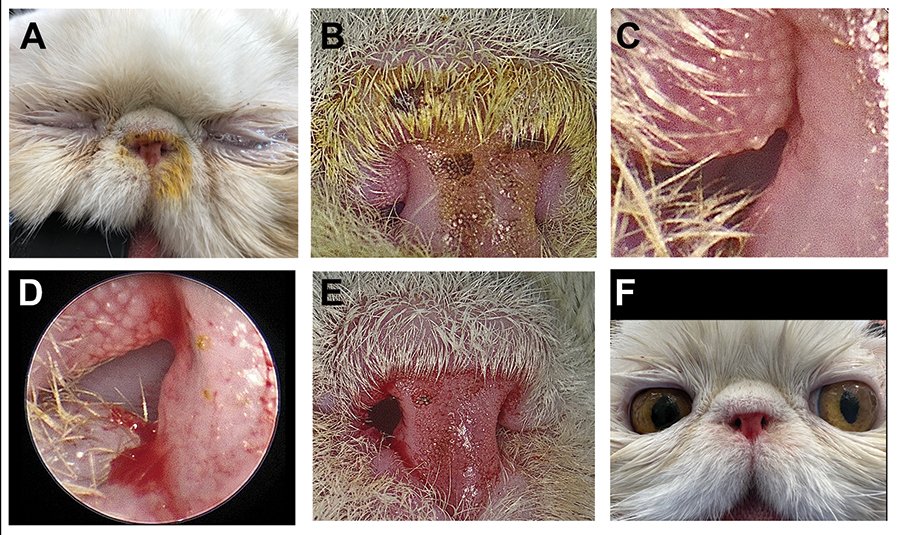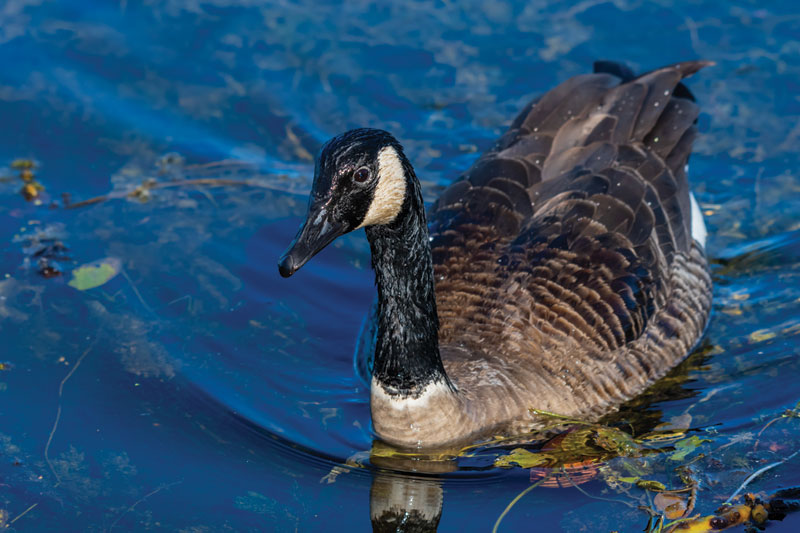Brachycephalic syndrome is a chronic, debilitating, and potentially fatal condition described mostly of canine breeds with severely shortened craniofacial conformation. Persian, Himalayan, Burmese, and Exotic Shorthair cats are popular feline brachycephalic breeds.
Growing Popularity of Brachycephalics
Demand for severe brachycephalic conformation persists in small animals despite the known encumbrances imposed upon the brachycephalic dog. Registration of canine brachycephalic breeds increased more than 450% between 2000 and 2010.
The American Kennel Club has also recently reported a substantial increase in the popularity of brachycephalic dogs; during the past decade, registration of English bulldogs and French bulldogs increased by 69% and 476%, respectively. French and English bulldogs have remained in the top 10 breeds registered with the American Kennel Club since 2014 and are among the top five breeds registered since 2017. Even more concerning, registration of brachycephalic breeds has skyrocketed in the United Kingdom in recent years, with registration of French bulldogs increasing 15-fold from over 2,200 in 2010 to over 33,000 in 2020.
An estimated 35 million to 46 million households in the United States had cats in 2011, according to the American Humane Association. Brachycephalic feline breeds rank first (Persian) and third (Exotic Shorthair) in popularity among all pure-bred cats owned.
All these data indicate that a sizable population of dogs and cats are at risk.
Anatomy and Signalment in Brachycephalic Syndrome
Congenital and acquired deformities result from craniofacial bony shortening without a concomitant reduction in the volume of nasopharyngeal and oropharyngeal soft tissues. These deformities often result in various degrees of upper airway obstruction.
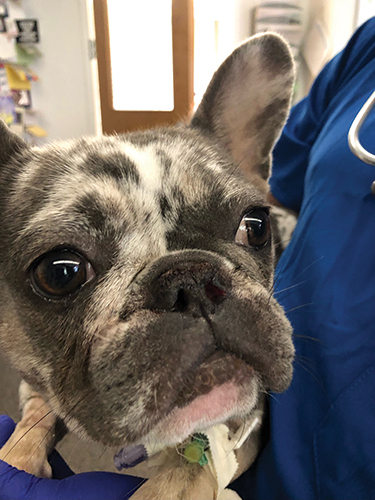
Accepted primary components of brachycephalic obstructive airway syndrome include stenotic nares, elongated soft palate, hypoplastic trachea, aberrant nasal turbinates, and macroglossia. Clinical signs commonly associated with the respiratory tract in dogs include snoring or stertor, coughing, stridor, inspiratory dyspnea, difficulty eating, difficulty sleeping and sleep apnea, choking, exercise intolerance, cyanosis, syncope, and death.
Recently, Drs. Heidi Phillips and Hadley Gleason were able to show through two studies, including one funded by the Every Cat Health Foundation, that a feline brachycephalic syndrome also exists. Stenotic nares was the predominant primary abnormality in cats, and all cats demonstrated abnormalities on echocardiographic evaluation. Following surgery to open the nares using a novel procedure adapted from dogs, termed ala vestibuloplasty, all cats’ echocardiographic abnormalities returned to within normal ranges.
Clinical signs demonstrated by brachycephalic cats prior to surgery were greatly reduced by ala vestibuloplasty. These signs included: snoring, sneezing, coughing, nasal discharge, and owner perception of impaired smell; frequent episodes of dyspnea, shorter duration of activity before becoming dyspneic, slower recovery from activity, lower activity levels, and increased respiratory noise; and hypersalivation, halitosis, and difficulty with chewing.
Surgical Options for Brachycephalic Syndrome
In dogs, a number of early studies have shown subjective reductions in clinical signs following traditional upper airway surgeries, such as wedge resection alaplasty and staphylectomy. However, newer techniques, such as ala vestibuloplasty, folded flap palatoplasty, and laser-assisted turbinectomy (LATE), in dogs have shown great promise as superior treatment options for brachycephalic pets.
These newer techniques are part of a multi-level upper airway approach taken by Dr. Phillips and the soft tissue surgery team at the University of Illinois when treating brachycephalic obstructive airway syndrome in dogs and cats.
Ala Vestibuloplasty
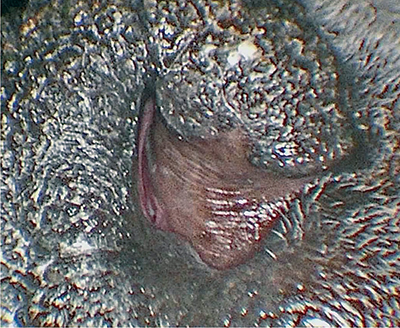
Ala vestibuloplasty is a procedure advocated by Dr. Gerhard Oechtering in which both the axial portion of the alar wing and all of the alar fold are removed by amputation. The procedure results in a very cosmetic appearance when done properly. It also profoundly increases the patient’s ability to move air through the nares, where traditionally up to 80% of airway resistance has been reported to originate.
Caption for image at top of page: External appearance of the nares preoperative (A-D) and postoperative (E, F) ala vestibuloplasty. Note the obstructive alar fold (C) and contrast between the operated and unoperated nares (E) during surgery. (From: Gleason HE, Phillips H, Fries R, Keating S, Hamel P, McCoy A. Ala vestibuloplasty improves cardiopulmonary and activity-related parameters in brachycephalic cats. Vet Surg. 2023; 52(4): 575-586. doi:10.1111/vsu.13948)
Folded Flap Palatoplasty
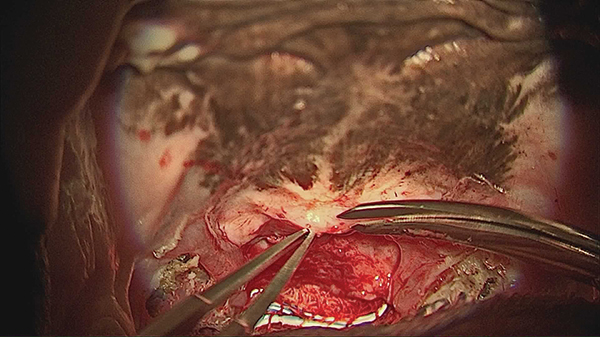
Folded flap palatoplasty, a procedure advocated by Findji and Dupre, is performed more frequently in Europe than in the United States, although its popularity among surgeons is increasing with exposure to the procedure. Our experience at the University of Illinois has been that many brachycephalic dogs—especially French bulldogs, English bulldogs, and pugs—have not only an elongated palate but also a very thickened soft palate that contributes to nasopharyngeal airway obstruction, lethargy, exercise intolerance, and sleep apnea. Traditional staphylectomy only addresses the length of the palate and does nothing to treat palate thickness, which can often be profound, being greater than four to six times the normal soft palate thickness.
Dr. Phillips and our soft tissue surgeons routinely perform folded flap palatoplasty in any pet with signs of sleep apnea after performing head, neck, and thoracic computed tomography (CT) to help characterize the thickness of the soft palate and other airway and gastrointestinal abnormalities. The procedural outcomes so far have been remarkably positive, relieving sleep apnea in nearly 100% of patients to date.
Laser-Assisted Turbinectomy
Lastly, Dr. Phillips and the University of Illinois comprise one of only three groups in the world that perform laser-assisted turbinectomy (LATE) for removal of aberrant turbinates and relief of crowding of nasal turbinates within the nasal passages. While LATE is not needed for every brachycephalic dog, consideration as to whether aberrant turbinates may be contributing to ongoing signs is warranted in any brachycephalic dog that has failed traditional surgery or even the novel multilevel upper airway surgery performed by our surgeons.
Veterinarians’ Role in Responding to Brachycephalic Syndrome
With the elevation of the French bulldog on the national stage and rapidly growing popularity of these and other brachycephalic breeds, the onus is on veterinarians to educate owners that stertor, snoring, difficulty eating and sleeping, and exercise intolerance are not normal for any brachycephalic breeds. Additionally, cats may exhibit subtle signs and, sadly, often suffer unnoticed.
Ownership of brachycephalic pets is ever-increasing. We at the University of Illinois are committed to educating owners, veterinarians, breeders, and other surgeons on the merits of more stringent breeding practices to limit animal suffering in combination with more novel and complete surgical treatments for animals already impacted by brachycephaly.
If you would like to learn more about how to manage brachycephalic patients in your practice and what pets might benefit from referral, please do not hesitate to contact us. We look forward to working with you!
By Heidi Phillips VMD, DACVS-SA

